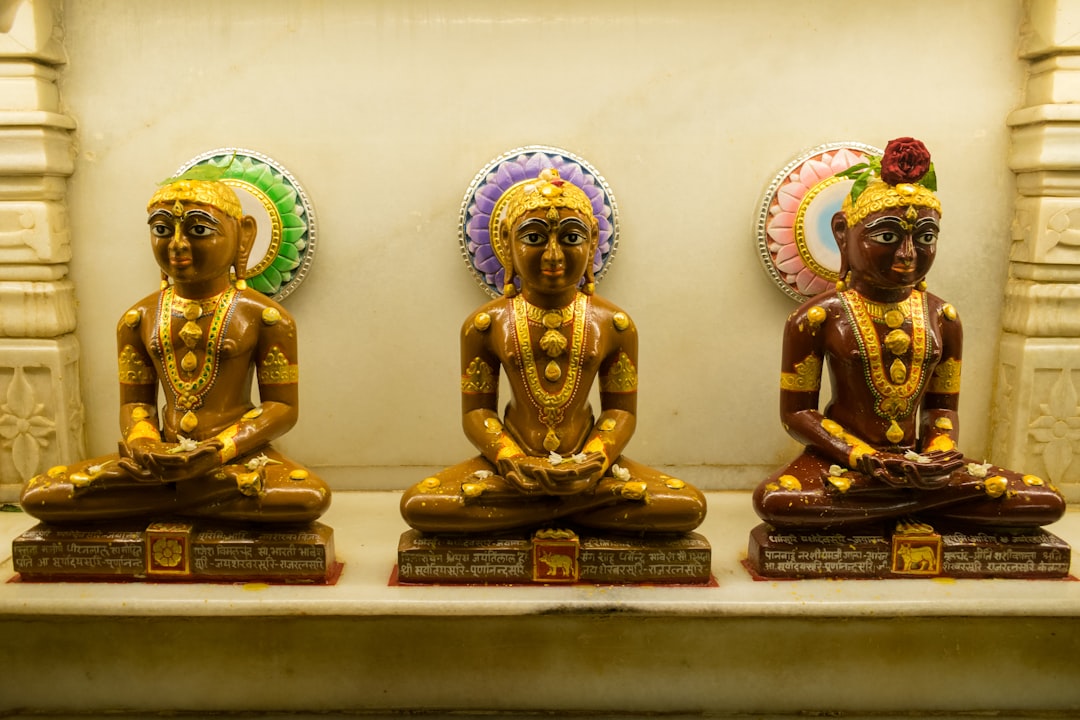The Brahmavihara: The Four Divine Abidings Explained
Introduction
The Brahmaviharas, also known as the "Four Immeasurables" or "Four Divine Abodes," are fundamental Buddhist teachings on loving-kindness, compassion, empathetic joy, and equanimity. Central to early Buddhist practice and also recognized in later Mahayana and even Hindu thought, the Brahmaviharas provide a roadmap for ethical living, emotional resilience, and spiritual development. This article explores their origins, practice, significance, and practical implications for both ancient and modern practitioners.
What Are the Brahmaviharas?
The Pali term Brahmavihara means "abodes of Brahma" or "divine dwellings" — states of mind where noble beings “abide” and cultivate wholesome attitudes toward all sentient beings. There are four:
- Metta (Loving-kindness)
- Karuna (Compassion)
- Mudita (Empathetic or Sympathetic Joy)
- Upekkha (Equanimity)
These qualities are developed through meditation, daily interactions, and ethical discipline.
Origins and Scriptural Basis
The Brahmaviharas are described in numerous Pali Canon suttas (e.g., the Metta Sutta, Digha Nikaya 13, Majjhima Nikaya 21, and others). Buddha taught these qualities as limitless, boundless, and universal, to be extended to all beings unconditionally.
Table 1: Brahmavihara References in Early Buddhist Scriptures
| Brahmavihara | Pali Description | Example Sutta Reference | Alternate Names |
|---|---|---|---|
| Metta | Loving-kindness | Karaniya Metta Sutta | Maitri (Sanskrit), Goodwill |
| Karuna | Compassion | Karuna Sutta | Empathy |
| Mudita | Sympathetic Joy | Mudita Sutta | Altruistic joy |
| Upekkha | Equanimity | Upekkha Sutta | Balance, Even-mindedness |
Detailed Exploration of Each Brahmavihara
1. Metta (Loving-kindness)
Metta is the heartfelt wish for all beings to be happy, safe, and at peace. It is unconditional goodwill, not constrained by self-interest or attachment.
Metta Meditation Example
- Silent repetition: “May all beings be happy. May all beings be free from suffering.”
- Progression: Start with oneself, then extend outward (loved ones, neutral people, difficult people, all beings).
2. Karuna (Compassion)
Karuna is empathy with the suffering of others, coupled with a desire to alleviate it. It differs from pity in that it does not see the other as inferior, but as a fellow human.
Karuna in Action
- Visiting the sick, volunteering, mindful listening.
- Cultivated by reflecting: “May all beings be free from suffering.”
3. Mudita (Empathetic Joy)
Mudita is finding joy in the happiness and good fortune of others, rather than jealousy or resentment.
Cultivating Mudita
- Celebrating others’ achievements.
- Reflecting: “I am glad at your happiness.”
4. Upekkha (Equanimity)
Upekkha is balance and even-mindedness. Amidst life’s joys and sorrows, gains and losses, pleasant and unpleasant, Upekkha is the peace unaffected by external circumstances.
Upekkha Practices
- Mindfulness of impermanence.
- Repeating: “May I learn to accept loss and gain, praise and blame, pain and pleasure.”
Comparison Table: The Four Brahmaviharas
| Brahmavihara | Primary Quality | Opposing Unwholesome State | Meditation Phrase | Skillful Applications |
|---|---|---|---|---|
| Metta | Loving-kindness | Hatred, ill-will | “May all beings be happy.” | Nonviolent communication |
| Karuna | Compassion | Cruelty, indifference | “May all beings be free from suffering.” | Helping the needy |
| Mudita | Sympathetic joy | Envy, jealousy | “May your happiness continue.” | Congratulating others |
| Upekkha | Equanimity, impartiality | Clinging, aversion, bias | “May I accept things as they are.” | Resilience under stress |
The Psychological and Social Value
Practicing the Brahmaviharas helps reduce negative mental states (hatred, envy, resentment, anxiety) and builds pro-social emotions — vital for both individual well-being and community harmony.
Benefits:
- Metta reduces anger and promotes a sense of connection.
- Karuna counters selfishness, building altruism.
- Mudita curbs jealousy, nurturing gratitude and healthy relationships.
- Upekkha fosters emotional resilience and wise decision-making.
Application in Daily Life
Practical Ways to Cultivate Brahmavihara:
| Context | Practice |
|---|---|
| Workplace | Rejoice in colleagues’ achievements (Mudita) |
| Family | Show empathy during tough times (Karuna) |
| Society | Advocate fairness and justice (Upekkha) |
| All Interactions | Offer goodwill and kindness (Metta) |
Misunderstandings and Cautions
- Metta is not attachment.
- Karuna is not pity; it is active care and empathy.
- Mudita avoids schadenfreude (joy at others’ misfortune).
- Upekkha is not apathy or indifference—rather, it is engaged balance.
Brahmavihara in Mahayana and Other Traditions
The Brahmaviharas are foundational even in Mahayana Buddhism, integrated into the Bodhisattva path (the cultivation of the “Four Immeasurables” to benefit all beings). Hindu traditions, particularly certain schools of yoga, also recommend cultivating these attitudes as a basis for samadhi (meditative absorption).
Conclusion
The Brahmaviharas offer a timeless guide for wholesome living, mental health, and spiritual growth. They encourage us to face life’s joys and challenges with an open, balanced, and loving heart. By integrating Metta, Karuna, Mudita, and Upekkha into our daily lives, we sow the seeds for a more peaceful society and personal fulfillment.
Further Reading
- The Four Immeasurables: Practices to Open the Heart (B. Alan Wallace)
- Loving-Kindness: The Revolutionary Art of Happiness (Sharon Salzberg)
Table References and Summary: The included tables summarize the scriptural sources, qualities, and practical expressions of the Brahmaviharas, highlighting their adaptability and importance in both spiritual and daily contexts.

Comments
No comments yet. Be the first to comment!